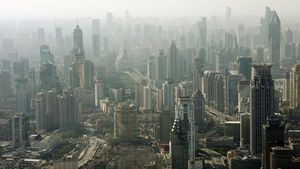The world of synthetic biology is often likened to a grand tapestry, where scientists weave intricate genetic designs into living organisms, creating new functions and capabilities. Yet, there are significant hurdles to overcome. A recent study led by Noor Radde and colleagues has shed light on a critical limitation in this field: the concept of ‘burden’ associated with engineered DNA sequences. This burden can impact cell growth, often leading to unintended evolutionary consequences that jeopardize the reliability of the engineered traits. Understanding this phenomenon is crucial, especially as synthetic biology aims to develop applications ranging from biofuels to advanced therapeutics.
Imagine you’ve baked a cake but forgot a key ingredient—it might rise a little, but it won’t have the intended flavor or texture. Similarly, when cells are equipped with engineered DNA, they can experience a ‘burden’ that hampers their growth and functionality. This study, published in Nature Communications, measured the impact of 301 BioBrick plasmids on the growth of Escherichia coli (E. coli), a common model organism in synthetic biology. The researchers found that nearly 20% of these genetic constructs significantly hindered the bacteria’s ability to multiply, primarily due to a depletion of essential cellular resources. The findings urge a re-evaluation of how synthetic biology constructs are designed and implemented for industrial applications.
The pivotal question this research addresses is not merely about whether an engineered genetic sequence functions, but how much it disrupts the host organism's natural processes. When plasmids use the host's cellular machinery to function, they can become burdensome, leading mutant strains—those that have evolved to alleviate this burden—to spread rapidly within the population. Such evolutionary failures can occur in laboratory settings or at larger industrial scales, potentially undermining the success of synthetic biology projects.
The study leverages both observational and experimental methodologies to quantify the extent of burden caused by various BioBricks. Each BioBrick is a tiny segment of DNA, typically a promoter or gene, designed for easy integration into larger genetic systems to produce specific products like proteins. The approach included assessing how these segments affected the cellular growth rates and protein production capacities of E. coli.
To investigate the burden of these constructs, the researchers set up a series of structured experiments involving the transformation of E. coli with BioBrick-containing plasmids. They meticulously measured growth rates and fluorescence signals—specifically from a green fluorescent protein (GFP)—to determine how these constructs influenced the bacterial growth. The details of the study were robust, drawing on empirical data to establish a model for understanding evolutionary failure due to burdensome DNA.
In the experiments, they used a technique to normalize growth and fluorescence measurements, ensuring consistency across tests. By comparing strains containing different BioBricks, they calculated how much growth and protein production were compromised compared to non-burdensome strains. Their analysis revealed that a significant proportion of tested BioBricks imposed burdens on bacterial growth; notably, constructs that directed the host's limited gene expression resources were the most problematic.
This meticulous analysis allowed the researchers to categorize the BioBricks based on their associated burdens. Most importantly, they discovered that the presence of strong promoters in constructs correlated strongly with imposed burdens, suggesting that the pressure on cellular resources was directly tied to genetic design choices. For instance, while some promoters triggered robust gene expression, they also consumed considerable cellular machinery, leading to reduced overall growth rates.
To visualize the implications of these results, think of a busy highway: the more cars you have, the slower they move, and the more jammed the traffic becomes. When a cellular construct is ‘heavy’ and demands a lot from the cellular machinery, the entire organism becomes sluggish and less competitive, allowing opportunistic mutations to thrive.
One major takeaway from the research is this: to avoid creating unintentionally burdensome constructs, synthetic biologists should aim to keep the slowdown in growth to less than 30%. This threshold is echoed in the study’s predictive model of evolutionary failure, developed alongside the experimental component. This interactive model can help practitioners understand how changing parameters—like the mutation rate of DNA constructs—might influence whether a strain can remain functional over time.
While some might view this conclusion as limiting, it actually presents an opportunity for innovation. By refining their designs to align with these findings, researchers can create more robust and stable bioengineering applications. This could significantly enhance the usability of synthetic biology in real-world settings, from agriculture to energy production.
The implications of these findings extend beyond the laboratory bench. With the current trajectory of synthetic biology aimed at producing sustainable biofuels, engineered microbes with optimized strains could reduce environmental impacts substantially. Likewise, those working on therapeutic applications, such as engineered microbes that deliver drugs to specific sites in the human body, need to balance efficacy with resilience against evolutionary failures.
However, it’s essential to acknowledge the limitations of the current study. The researchers indicated that the burden of some BioBricks may be influenced by factors not fully addressed in their models. For example, they did not explore the full spectrum of mutations that can occur within plasmid constructs or the potential influence of different growth conditions on the observed burdens. Future studies will need to investigate these dynamics further, as well as examine how various constructs function in real-world applications over longer periods.
Additionally, exploring deeper into how specific sequences and their inherent features contribute to burdens could yield further insights. Understanding whether certain genetic elements may inherently predispose constructs to costlier cellular demands is crucial for future engineering endeavors.
The path forward is paved with possibilities. As synthetic biologists continue to innovate, it's important to remember the lessons learned from this study. Creating less burdensome constructs can lead to sustained functionality and evolutionary stability, ultimately unlocking the full potential of synthetic biology in various applications.
In recent years, synthetic biology has progressed at an unprecedented pace. With the advent of genome editing technologies, such as CRISPR, the landscape is evolving rapidly. The advancements brought by these technologies have amplified the potential for impactful applications while simultaneously introducing new complexities regarding evolutionary stability, as illustrated by the findings of this study.
To conclude, the research by Radde and colleagues reinforces a fundamental doctrine in synthetic biology: a balance must exist between the ambitions of engineered design and the natural complexities of cellular life. The authors succinctly state, “to avoid the specter of unwanted evolution, don’t attempt to engineer a microbial cell in a way that slows its growth rate by >30%.” This caution serves as a reminder of the intricate dance between design and function in the evolving field of synthetic biology.



